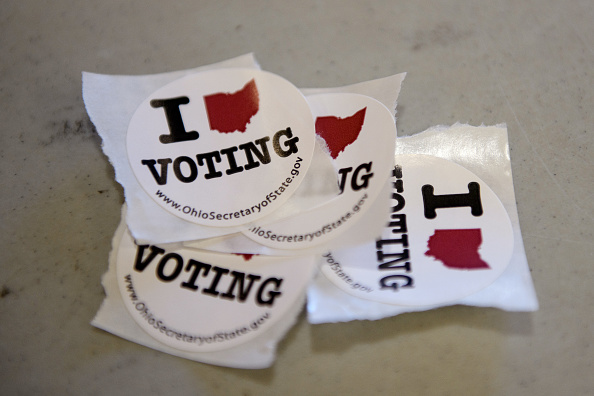Ohio may have won its Supreme Court battle to implement its extreme “use it or lose it” voter purges. But the war over the purging process rages on.
A new Republican secretary of state — who has introduced new measures that, in theory, could help prevent eligible voters from losing their ballot access — is catching heat for continuing with his predecessor’s purge program. The program begins the process for removal based on a person sitting out a certain number of elections.
“Ohio is looking at purging about a half million from the voter rolls this year alone which is a large percentage of Ohio’s population,” Jen Miller, the executive director of Ohio’s League of Women Voters told TPM.
LWV and other voting rights group are holding a press conference Thursday calling for Secretary of State Frank LaRose to stop or delay a purge set to occur next month.
“There are significant concerns about how the purge is being administered,” said Mike Brickner, the Ohio state director of All Voting Is Local.
‘Use It Or Lose It’ Purging Lives On
Championed by former Secretary of State John Husted, Ohio’s system of initiating the purge process based on a voter’s failure to vote has been the subject of a multi-year battle that reached the Supreme Court last year.
Under the system, if a voter doesn’t participate in six years of elections — so even just two midterms and one presidential — and if that voter has failed to respond to a mailed notice confirming their registration, they are removed from the rolls.
Civil rights advocates argue that this “use it or lose it” approach was punishing people for sitting out elections. They say that a single notice in the mail is not enough follow-up to prove those infrequent voters had left the state or died. They claim that low income people, homeless people and people of color were the most vulnerable to improperly being tossed off the roles.
The Supreme Court, however, ruled in June 2018 that the system was permissible under the National Voter Registration Act, which imposes guardrails on voter purges, while requiring that states conduct some sort of list maintenance protocol. Opponents of the process have left open the possibility that they’d challenge it again under the Voting Rights Act, on the basis that it’s racially discriminatory because of which voters the process tends to affect.
In January 2019, in the final days of his, tenure Husted oversaw the first purge since the decision, which targeted 276,200 people for removal from the voter rolls.
LaRose, the new secretary of state, has called the supplemental system “antiquated” and is advocating for legislation to modernize voter registration.
Nonetheless, he has moved forward with it, with a directive in June instructing counties to remove voters based on their inactivity and failure to respond to mailed notices.
That purge, set to occur in September, is expected to remove some 235,000 individuals from the rolls. That total includes both those removed for inactivity (known as the “supplemental process”) and those removed based on the U.S. Postal Service’s change of address records — a less controversial approach to conducting list maintenance.
LaRose’s office declined to make him available for an interview for this story, but defended his decision to double down on the purge protocol.
“To be clear, if we did not issue our directive in June of this year, we would be explicitly breaking the law,” his spokesperson Maggie Sheheen said.
Election law experts disagree with this interpretation of the law and advocates are calling on LaRose to at least put the purges on pause to further vet the individuals who stand to be removed.
Same Purge, New Concerns
When announcing the directive, LaRose’s office stressed the additional steps he’s taken to keep eligible voters on the rolls. He ordered additional rounds of mailed notices and for the first time, also instructed counties to compile a now-public list of the voters set for removal.
The idea of a public list is that outside groups, like NAACP and League of Women Voters, can do one last round of outreach before the removals, while individuals can also search the list to see if their registrations are in jeopardy.
Scrutiny of that effort has revealed discrepancies in the county lists. In Franklin County — home to Columbus — 1,128 people who shouldn’t have been on the list were sent last chance notices and another 123 who shouldn’t have been purged in January were. Three other counties, albeit much smaller than Franklin, appeared to have some discrepancies as well.
Brickner said that while he appreciates LaRose’s move to publish the purge list, it has shown “every county has a different way of doing the purge and some of them might not be accurate.”
LaRose’s office denied that there was any flexibility in how counties were going about the purges and his spokesperson stressed that the “minor” discrepancies that had been found had already been resolved.
But the current concerns go beyond those specific issues. Voting rights groups say they don’t have the resources or adequate information about the voters to make contact with the 235,000 individuals — particularly in the month-long time period they had to do so before September’s removals.
What studying the list has shown, Brickner said, is that there are “high number” of soon-to-be-purged individuals who are not marked as dead and who have active addresses in Ohio.
“This is going to disenfranchise people who otherwise would be able to vote,” he said.



